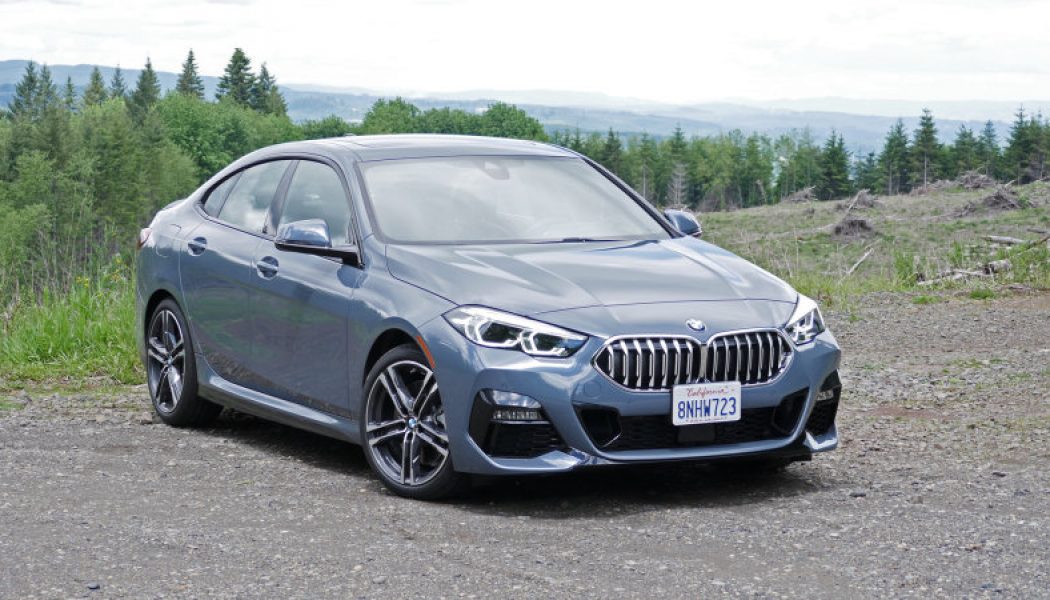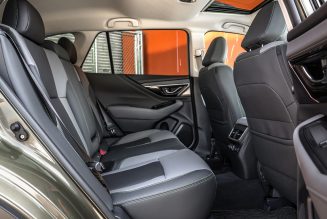Since arriving to our fleet six months ago, the 2020 BMW 228i Gran Coupe has been a faithful daily driver. From weekend food hunting to serving as my ride to (distanced) martial arts practice, the 228i has been up to the task. Recently, I did a 284-mile round trip to and from Thermal, California, to attend the BMW Performance Center’s car control class. The drive gave me a sense of what the 228i is like on road trips—and if you’re considering a 228i with the M Sport package, and you like long drives, you’ll want to read on.
Just a few minutes into the trip, I realized that I was in for a bumpy two hours. The M Sport suspension, which is part of the M Sport package on the 228i and standard on the M235i, improves handling slightly but sacrifices comfort significantly. You feel every bump, rut, and pothole. Impacts get transmitted into your back like sharp kidney shots. Having all-season run-flat rubber didn’t help things; they’re noisy and compromise the ride even more on the highway. The choppy ride is tolerable around town, but after about an hour the overly stiff suspension tuning begins taking its toll.
Other than the ride, the 228i handled the rest of the trip admirably. Faced with steep, hilly stretches, the 228i’s 2.0-liter turbo-four hummed along without any drama, ready to serve up a portion of its 228 hp and 258 lb-ft on command. And the well-tuned eight-speed automatic transmission always seemed to find the right gear for immediate response, making passing and merging a breeze.
Heading home after a useful day of performance driving instruction, trouble struck. I hit a pothole that punctured the left rear tire, causing the 228i to pull distressingly in that direction for a stressful 20 minutes until it could be limped home. The sharp, high-speed impact may have put excessive the pressure on one tire, compromising the inner sidewall. I suspect this might not have happened if the car wasn’t so stiff in the first place, better able to absorb impacts and dispatch them properly. The price of a new run-flat tire set my wallet on fire, but I’d rather pay that price than wrestle with a spare on the side of the road. Moral of the story: The 228i isn’t very well balanced, and it isn’t because of its FWD-based layout—it’s because of its compromised suspension. This vehicle came out of the oven too early.
After that trip, I kept thinking about the 228i Gran Coupe as a road trip car. Eventually, my conclusion was that if you have another vehicle, don’t take the 2 Series Gran Coupe. The biggest deal breakers are the harsh ride—and this car’s frustrating ergonomics. Half a year in, I still haven’t found a comfortable seating position; either my knees are too close to the dash, or my arms are too stretched out. Both front seats feel high and my head feels too close to the ceiling (I’m only 5’11”). There are plenty of adjustments but no matter how hard I tried, there just wasn’t one that I found comfortable for my slightly chunky body type. The fact that the seats feel like rocks don’t help things on longer journeys regardless of how much you tinker with the lumbar.
In this day and age, excellent handling can coexist with superb ride quality when a vehicle’s suspension is tuned properly—case in point, the Cadillac CT4, which offers superb levels of comfort and exciting handling even in the performance-oriented V model. At the end of a long drive or commute in the 228i, you feel like the car beat you into a pulp, which speaks to how stiffly sprung it is.
A week later, the 228i was back on the road with a new tire, which will hopefully stay intact for the rest of the car’s stay with us. Stay tuned as we put BMW’s newest entry-level sedan through its paces at the track.










